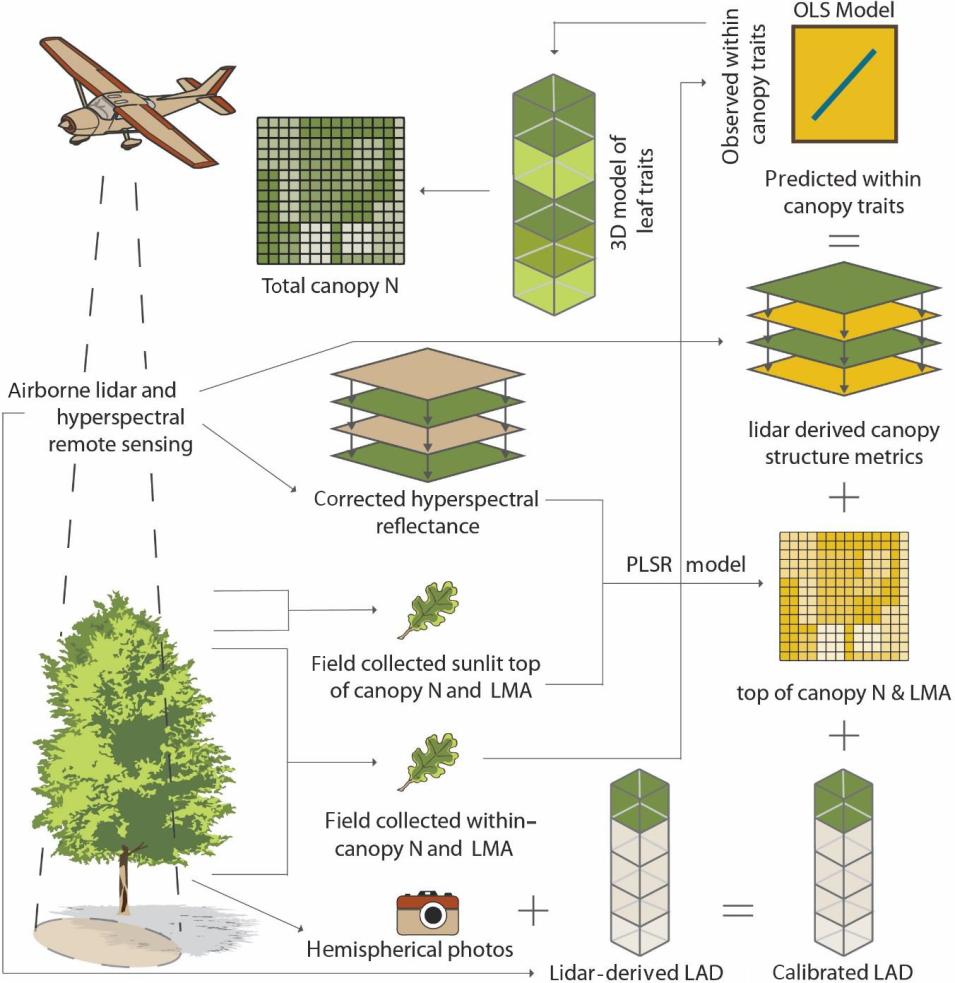Dr. Kyla Dahlin, Associate Professor, Michigan State University; Department of Geography, Environment, and Spatial Sciences; Program in Ecology, Evolution, and Behavior
Research Interests: Terrestrial ecology, the intersection of ecology and geography (ecogeography), biology, environmental management, and Earth system modelling.
Research Highlights: Carbon—one of the primary building blocks of all organic matter on Earth—is a fundamental part of the Earth system, and it moves through the planet’s atmospheric, terrestrial, and marine ecosystems through a range of biological, chemical, geological, and physical processes known as the carbon cycle.
For most people, the movement of carbon through the environment is evident in the lives of plants and animals. Plants grow by converting carbon dioxide (CO2), water, and sunlight to biomass (e.g., leaves and stems) and oxygen through photosynthesis. Then, the carbon returns to the atmosphere when the plants decay, are eaten and digested by animals, or burn in fires.
The way the carbon cycle is beginning to change due to increased levels of CO2 in the atmosphere is noticeable, too. For example, warmer temperatures are lengthening the growing seasons of plants, causing them to bloom earlier in the year and thereby altering food supplies for the animals that depend on them. It’s possible, of course, that longer growing seasons may result in more CO2 being taken out of the atmosphere. On the other hand, if increased warming leads to greater instances of drought and increased plant stress, plant growth may slow, resulting in more carbon being released into the atmosphere and even greater warming.
To figure out whether terrestrial vegetation will store more carbon (i.e., be a carbon sink) in the future or release it back into the atmosphere (i.e., be a carbon source), scientists rely on forecasts from ecosystem models infused with data from a range of sources. Their results, however, don’t always agree.
“Right now, we don’t know whether terrestrial ecosystems are going to become carbon sources or carbon sinks in the next 100 years, and there is research saying both will happen,” said Dr. Kyla Dahlin, an Associate Professor in Michigan State University’s Department of Geography, Environment, and Spatial Sciences and Program in Ecology, Evolution, and Behavior. “Model predictions depend on the particular ecosystem and spatial scale you’re looking at, the model that you’re using, and how you’re accounting for all the various ecosystem components."
Much of this uncertainty is associated with the inherent complexity of ecosystems themselves, as ecosystem processes are affected by a wide range of variables that can make it difficult to predict how they might change in the future. Yet, some of the uncertainty can be attributed to models as well.
“If you look at a lot of different ecosystem models, the [range of] what they’re predicting into the future gets wider and wider,” said Dahlin. “This is driven by the different ways models ‘think’ terrestrial ecosystems work.”
To help reduce this uncertainty, Dahlin and her colleagues have been studying how ecosystem variables, such as forest structure and species variability, impact carbon sequestration—information that could be used to improve model predictions of how climate change will impact plants and, more broadly, the entire Earth system.

